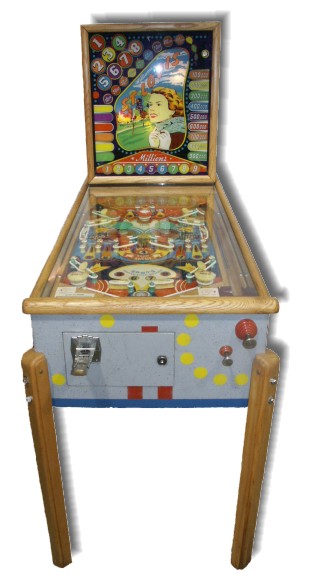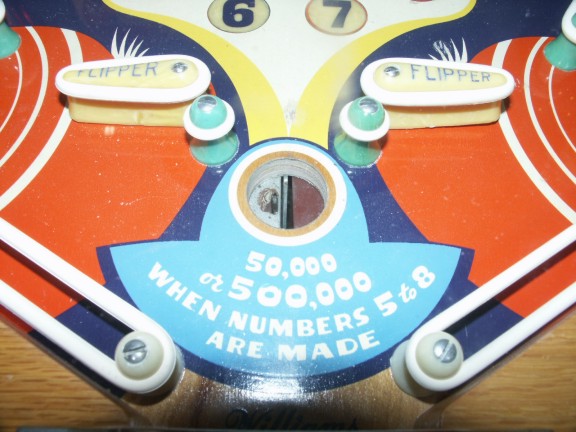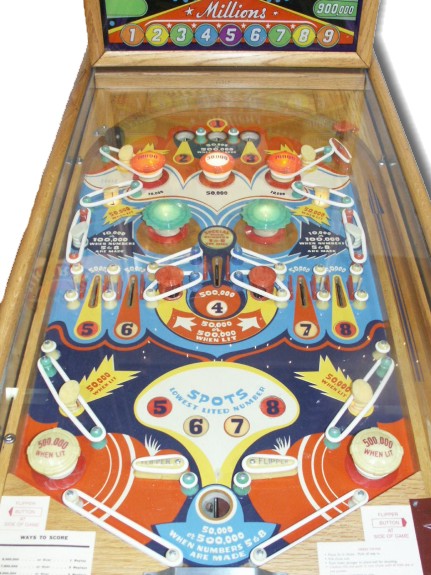|
June 2005 Featured Item |
|
|
Williams St. Louis Pinball Machine
|
|
 |
|
|
 |
|
This Williams St. Louis Pinball machine is from the Post-War era. Built in February of 1949 this pinball machine featured a symmetrical playfield, where the players objective is to hit eight different targets. After hitting all eight targets the player would score even higher points for ever target hit. Eventually earning themselves free plays. This Pinball machine features electro--mechanical, "Gobble Holes", also referred to as a "Kickout Saucer". A Gobble Hole is a hole in the playfield where the ball can fall into, adding so many points (depending on the hole), and then it would eject the ball back onto the playfield. One of the Gobble holes is beyond the point-of-no-return which forces the player to chose between loosing the ball for big points or keeping the ball in play (see picture 1). This Williams St. Louis game was an early flipper game. Flippers were not added to pinball machines until 1947. The flippers in this game, along with many of the other early flipper games, are arranged with the flippers pointing outward (see picture 1), unlike today's pinball machines where the flippers face inward. All pinball machines of this era had wood rails, basically meaning that the edges of the game box are made of wood (see picture 2). This is one way of determining the age of a pinball, if it had wood rails and flippers, then it was produced sometime from 1948-1960. The games produced before this had no flippers, and games produced after this had metal rails.
|
 |
|
Click here for more information on this Pinball Machine Click here to see previously featured items
|

|


